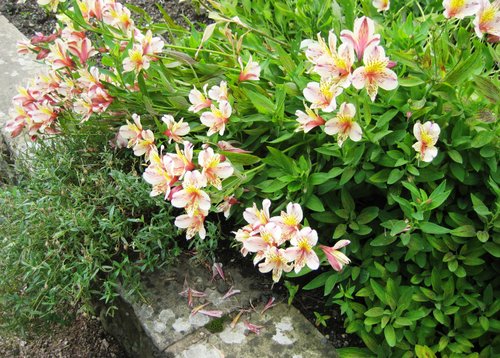Home › Raised bed gardening
Raised Bed Gardening:
The Solution To Many Gardening Problems
Whatever you grow, raised bed gardening provides a better growing environment for your plants and, best of all, a low maintenance environment for you!

Raised bed gardening is simply the technique of growing plants in beds that are higher than the level of the surrounding garden - a practice that has many advantages.
Raised beds are extremely versatile and can be used for both permanent and seasonal planting.
They can also be constructed from a variety of materials to suit you and your garden.
Whatever you like to grow, be it ornamentals, vegetables, fruit, or cut flowers to decorate your home, raised beds can make your gardening much more rewarding and productive - not to mention a whole lot easier!
From the point of view of garden design, raised beds made from sympathetic materials and filled with plants are an attractive feature in their own right. They also add a strong design element and visual appeal by introducing planting on different levels.
Even better, gardening in raised beds can be the easiest solution to many common gardening problems. For example...
Maybe you have the 'wrong' type of soil...
Raised beds put you in charge of your soil conditions. Once you've built your raised bed you can decide what sort of soil you want to put in it depending on what you want to grow.
This means that you're not restricted by the type of soil in your garden and will be able to grow a wider range of plants.
Whether you have a heavy, poorly drained clay soil, a light, sandy soil, or very acidic or alkaline soil, raised beds are the answer. (If you need more information on soils, go to garden soil and follow the links).
...or a garden or yard with no soil at all.
No problem - you don't have to go to the trouble and expense of breaking up concrete or lifting paving slabs, simply build one or more raised beds on top of the concrete and you're away!
Do you find yourself wishing you could extend the growing season...
As raised beds are higher than the surrounding garden, they warm up more quickly in the spring and stay warm well into the autumn effectively making the growing season longer - a real bonus in cooler regions.
...and get higher yields?
A well designed raised bed is narrow enough to allow you to work from the sides without standing on the soil.
This reduces the problems of soil compaction and means that you can plant more intensively resulting in higher yields.
The closer planting also means that weeds are less of a problem and that those weeds that do grow are easier to remove.
You will find that the 'lighter', less compacted soil conditions promote better plant growth.
Perhaps your garden seems too unmanageable to enjoy...
If you're pressed for time, one or more raised beds effectively confine planting to manageable small areas.
This means that you can concentrate on one area at a time rather than feeling completely overwhelmed by your garden and unable to decide where to start.
...or you find it difficult to tend your garden because of mobility problems?
Raised bed gardening means that you don't have to stoop and bend down to ground level to look after your plants.
You can raise your garden beds to a height that suits you and can even make the edges wide enough to form seats so that you can work from a sitting position.
Raised beds are also a great way for wheelchair users to remain active in the garden.
The Next Step...
I hope this has convinced you to try raised bed gardening for yourself. Before you begin, take a look at the tips on raised bed garden design.
I've also put together some ideas for creating plans for the ornamental raised bed garden and three sample plans showing how raised beds can be used to create an alcove for a garden bench, a small formal garden and a patio dining area.
If you enjoy growing vegetables, there is information about planning a raised bed vegetable garden and three sample plans for the vegetable garden. Plan 1 shows a possible layout if you have the space for a good sized plot.
If you have a small garden, Plan 2 and Plan 3 show two alternative layouts for a 3x3m (10x10ft) square.
Home › Raised bed gardening
